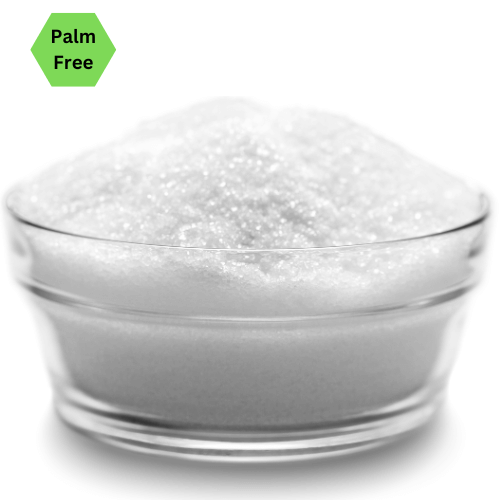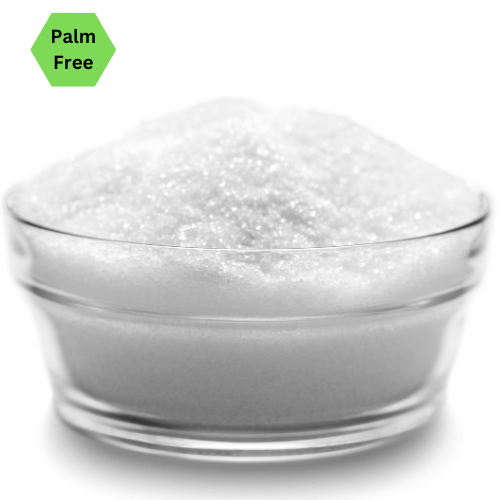Heirloom Body Care
Sodium Gluconate
Sodium Gluconate
Couldn't load pickup availability
Sodium Gluconate – The Perfect Chelating Agent
Sodium Gluconate is a highly effective chelating agent designed to improve the stability and performance of your formulations. With a usage rate as low as 0.1 - 1%, this versatile ingredient binds unwanted metal ions, preventing reactions with environmental substances that could impact your product's efficacy and shelf life.
Key Benefits
- Enhances Product Stability: Binds metal ions to prevent unwanted reactions, ensuring consistent performance.
- Improves Shelf Life: Protects formulations from degradation, reducing spoilage over time.
- Versatile Applications: Ideal for use in soaps, lotions, shampoos, cleansers, and more.
- Palm-Free: Derived from starch, offering a sustainable and eco-friendly option.
Specifications
- INCI Name: Sodium Gluconate
- CAS Number: 527-07-1
- Usage Rate: 0.1% - 1%
- Source: Starch-derived, palm-free
Why Choose Sodium Gluconate?
This ingredient is a formulator’s ally, providing essential chelating properties that reduce formulation issues and boost product performance. Its ability to stabilize and preserve ensures that your creations meet the highest standards of quality and efficacy.
Order Your Sodium Gluconate Today
Streamline your formulations with the chelating power of Sodium Gluconate. Perfect for enhancing the stability and longevity of soaps, lotions, shampoos, and more.
A very helpful review from George of Dawn Organics:
A very good non drying chelator in soap, great citric acid substitute for shampoo, facial and body cold process soap bars. Very effective at reducing soap scum at 1%. You add this to the water before adding the Lye. For cleaning soap it's a good idea to use with citric acid, dermofeel (Sodium Phytate) & Sodium Gluconate for a triple chelating action. All three work harmoniously to clean your dishes very well without leaving any soap scum residue on your dishes and surfaces. If you have really hard water, it wipes off very easily. If using with Citric acid, be sure to add the sodium gluconate and Sodium Phytate at light trace, dissolve them in distilled / spring water then add. Citric acid can react with them, so best for the reaction to happen in the lye pot to make sodium citrate, be sure to refer to your lye calculator so you know how much extra lye you need to add.
If using in cleaning liquid soap, Sodium Gluconate & Sodium Phytate can be added after you have diluted your liquid soap paste
Usage Rates for Dish & Laundry Bars / Liquid Soap - 3% citric acid, 1% Sodium Gluconate & 0.5% Sodium Phytate
Share

Very happy with the sodium gluconate
A very good non drying chelator in soap, great citric acid substitute for shampoo, facial and body cold process soap bars. Very effective at reducing soap scum at 1%. You add this to the water before adding the Lye. For cleaning soap it's a good idea to use with citric acid, dermofeel (Sodium Phytate) & Sodium Gluconate for a triple chelating action. All three work harmoniously to clean your dishes very well without leaving any soap scum residue on your dishes and surfaces. If you have really hard water, it wipes off very easily. If using with Citric acid, be sure to add the sodium gluconate and Sodium Phytate at light trace, dissolve them in distilled / spring water then add. Citric acid can react with them, so best for the reaction to happen in the lye pot to make sodium citrate, be sure to refer to your lye calculator so you know how much extra lye you need to add.
If using in cleaning liquid soap, Sodium Gluconate & Sodium Phytate can be added after you have diluted your liquid soap paste
Usage Rates for Dish & Laundry Bars / Liquid Soap - 3% citric acid, 1% Sodium Gluconate & 0.5% Sodium Phytate

